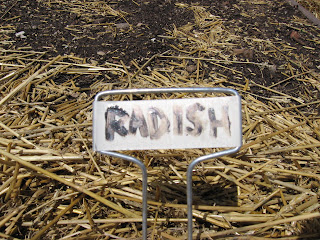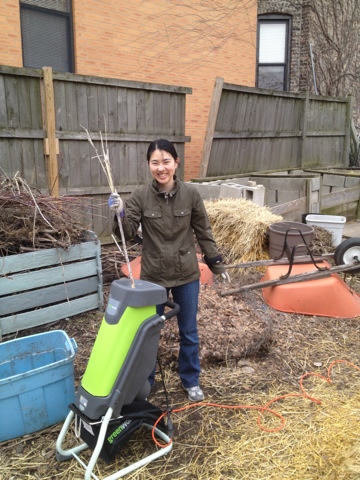While some of us used the large gardening fork to loosen the soil in some raised beds, others rebuilt raised beds that had fallen apart over the winter. The beds are essentially boxes made from heavy beams of plastic wood, secured with long rods of rebar. Rebuilding the beds involves prising the beams from the ground, repositioning them, and knocking them back into the ground. After preparing the raised beds, we planted them with radish and beet.
While the planting was going on, a number of us worked with the many bales of hay that had been laying around all winter. We distributed the intact bales throughout the garden, positioning them at the ends of raised beds or around structures like the bathtub or cherry tree planter. All of the bales were unwieldy; however, some had absorbed enough water over the winter that they were quite difficult to move. A number of bales had self-composted to the point that they were essentially blocks of icy mud. After rearranging the intact bales, we still had piles of leftover hay that we spread throughout the garden.
We have discussed how best to use hay bales ever since we received them as a donation last fall. We have many more bales than we need for use in cold frames, and probably more than we need for mulching. Because the bales are small enough to fit in oddly shaped spaces between our raised beds, we may use some of them as small vegetable planters, thereby increasing the available planting area in the garden.
Finally, we reorganized the garden shed. This is not the first time that we will reorganize the shed this year.
 |
| rebuilding a raised bed |
 |
| turning a raised bed |
 |
| our new reusable metal row labels |
 |
| all that's missing is a car up on blocks and the strains of a banjo |



























